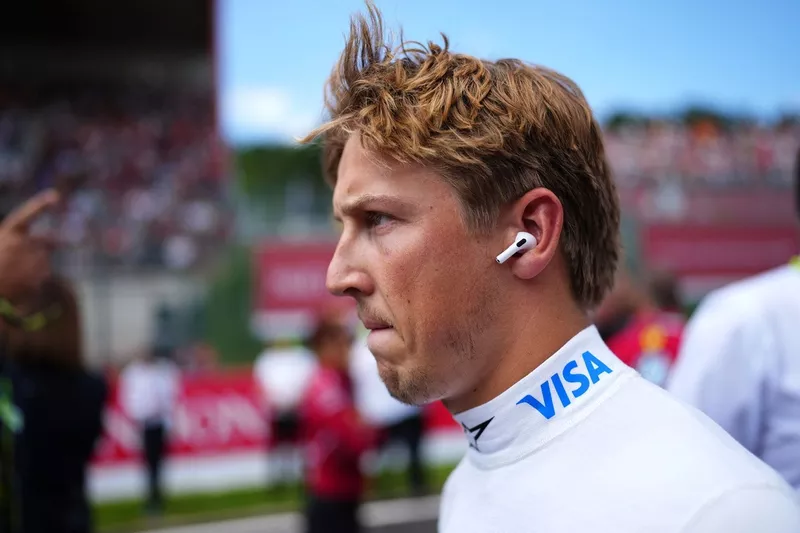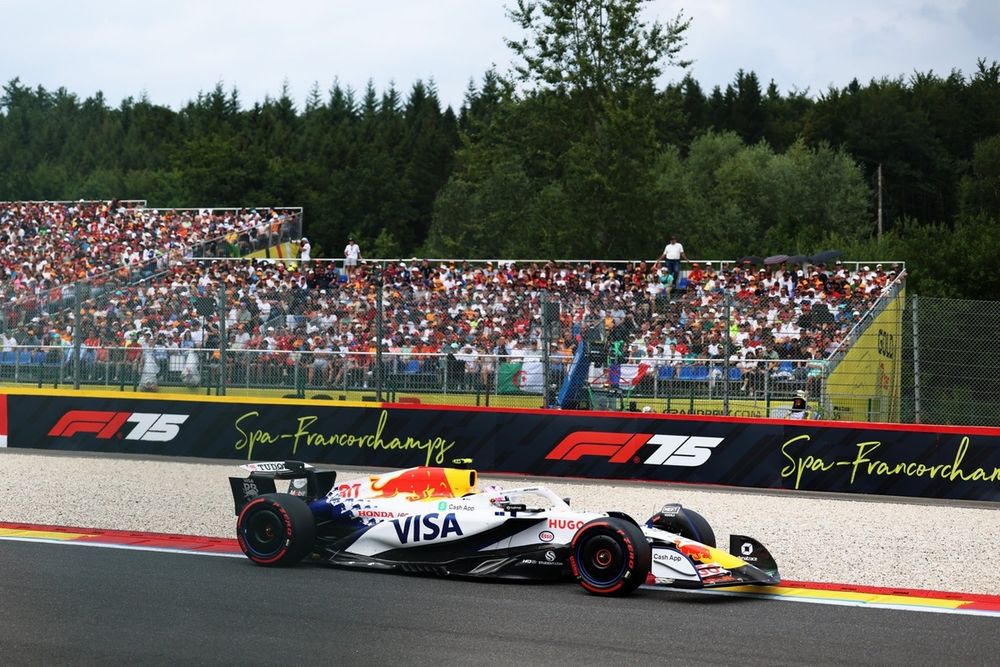
Lawson Frustrated by Equal Lap Times and DRS Trains: “Everyone’s Doing the Same Lap Time, It’s Very Difficult to Overtake”
DRS trains, marginal gaps and overtaking woes dominate Lawson’s Spa reflections
In the relentless theatre of Formula 1’s feeder series, where tenths of a second can mean the difference between pole and P15, Liam Lawson is discovering just how tight the margins really are. The young Red Bull reserve and hopeful future F1 star cut a frustrated but realistic figure after another intense day of wheel-to-wheel racing, this time at the iconic Spa-Francorchamps.
And his summary was strikingly simple: “Everyone’s doing the same lap time. It’s very difficult to overtake.”
Same pace, no space: the lap time compression problem
Lawson’s words weren’t just a reflection of personal disappointment—they echoed a broader issue that’s been brewing all season long. The field in Formula 2 and beyond has become so tightly packed that even the most marginal of time losses during qualifying can dump a driver several places down the grid.
“It was one of those days where the top five were incredibly close again,” Lawson said, exhaling as he broke down the day’s performance. “We were lucky in Austria to start at the front of that group, but today we just missed out. And when everyone’s doing almost identical lap times, it becomes nearly impossible to climb back up.”
DRS trains: the modern racer’s nightmare
This brings us to the dreaded term that every driver and team engineer now mutters under their breath—DRS trains.
DRS, or Drag Reduction System, was originally introduced to increase overtaking opportunities by reducing aerodynamic drag when a car is within one second of another. But when five or six cars are all within a second of each other, the advantage is nullified.
“You just sit there,” Lawson explained, “in this chain of cars, all with DRS, all with the same straight-line speed. You need a serious performance delta—an actual clear pace advantage—to make any real move stick.”
Spa, with its fast-flowing corners and lengthy straights, should in theory be an overtaker’s paradise. But in today’s ultra-competitive grid, it’s often more of a traffic jam.
Qualifying chaos and the cost of milliseconds

Liam Lawson, Racing Bulls Team
The raw competitiveness of the field makes qualifying arguably the most crucial session of any weekend. And Lawson knows it all too well.
“Even just losing two or three tenths—that’s it, you’re gone,” he admitted. “That might not sound like much, but it could drop you from fourth to tenth, easily. It’s brutal.”
In a category where cars are effectively equal and talent is spread more evenly than ever, finding even the smallest edge in qualifying can transform a driver’s entire weekend. Lawson pointed out that this week’s pre-race work—sim sessions, setup tweaks, and fine-tuning—mattered more than any headline-grabbing upgrades.
“The prep we did before this weekend made more difference than the actual updates to the car. The changes are so small, but in a field this tight, those tiny differences decide everything.”
Wet or dry? Lawson keeps his cool
With Spa’s famously unpredictable weather threatening to shake things up yet again, Lawson was asked if he had a preference for dry or wet conditions come race day. His answer? Classic racer nonchalance.
“Honestly, it doesn’t matter too much to me,” he shrugged. “Rain can create opportunities, definitely—but it also took me out of a race just a few weeks ago. So it can go either way. I’ll just push and make the most of whatever conditions we get.”
It’s the kind of mature, composed response you’d expect from someone steadily building experience, one weekend at a time.
Positive vibes amid leadership changes
It’s not just on-track matters that Lawson’s had to adjust to recently. Behind the scenes, there’s been a notable change in the Red Bull Racing ecosystem, with Alan Permane stepping into a more active role in the team’s trackside operations, replacing Laurent Mekies.
Lawson, though, seems at ease with the reshuffle. “We’re seeing less of Laurent, sure,” he noted, “but the atmosphere around the team hasn’t changed. Alan’s done a really good job stepping in. The energy’s good. Everyone’s positive and working together really well.”
Permane’s extensive F1 pedigree, honed through years at Renault and Alpine, appears to be rubbing off the right way in the Red Bull setup. For a young driver like Lawson, having steady hands at the wheel of the organisation is vital.
The road ahead: navigating the modern midfield
Lawson’s reflections are a reminder of just how different racing has become in the modern era. No longer is it enough to be quick—you must be flawless. With every driver in the top half of the grid operating within hundredths of a second of each other, the sport has entered an era of unprecedented parity.
Overtaking, once the art of late braking and daring lunges, is now about planning, precision, and pre-race execution. The phrase “track position is king” has never been more relevant.
Lawson’s own journey continues in this pressure-cooker environment, where the margin for error is razor-thin and success is measured in milliseconds. The frustration in his voice is understandable, but so too is the quiet confidence. He knows he belongs here—and he knows the difference between being stuck in a DRS train and leading the charge is just one perfect lap away.
And when that day comes, you can be sure Liam Lawson won’t need any help overtaking.












































There are no comments yet. Be the first to comment!